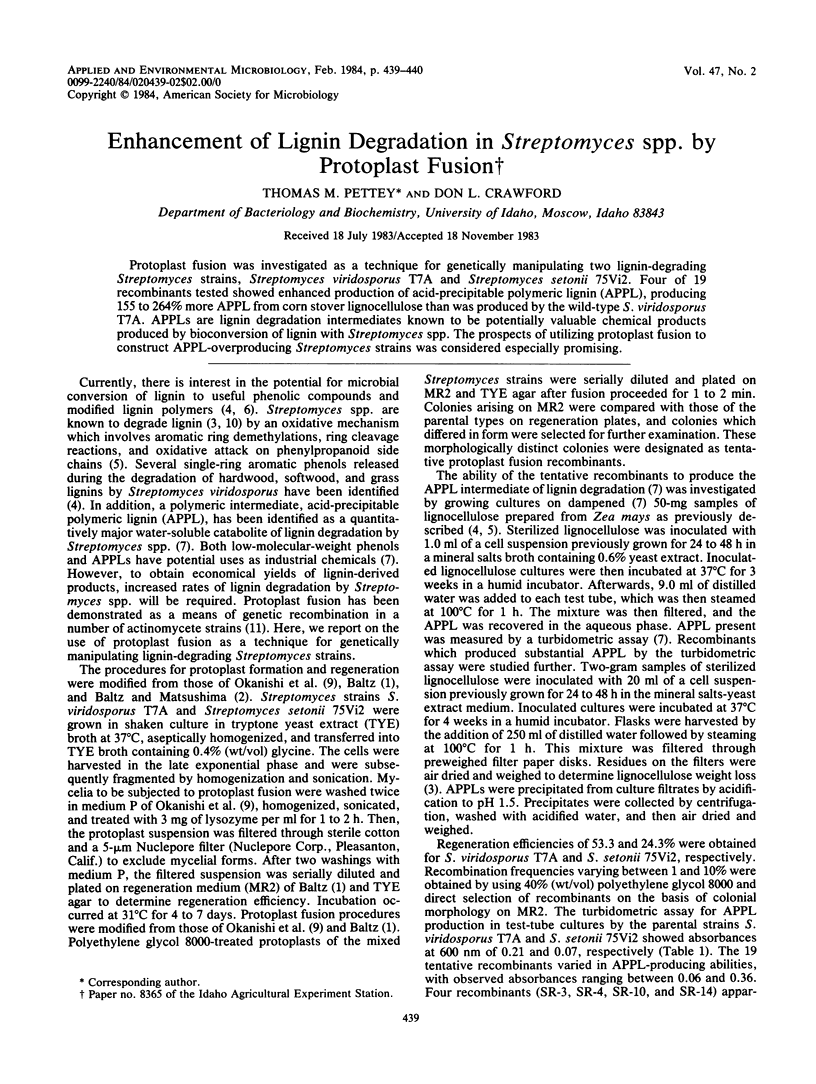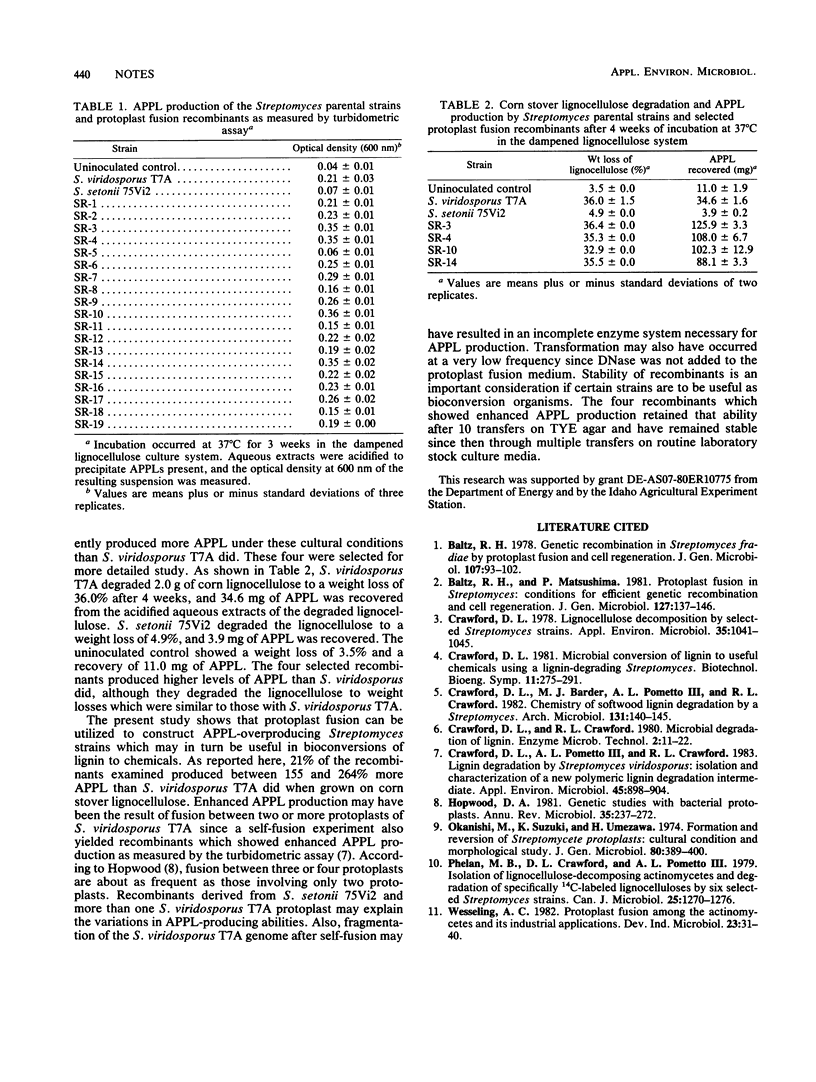Abstract
Protoplast fusion was investigated as a technique for genetically manipulating two lignin-degrading Streptomyces strains, Streptomyces viridosporus T7A and Streptomyces setonii 75Vi2. Four of 19 recombinants tested showed enhanced production of acid-precipitable polymeric lignin (APPL), producing 155 to 264% more APPL from corn stover lignocellulose than was produced by the wild-type S. viridosporus T7A. APPLs are lignin degradation intermediates known to be potentially valuable chemical products produced by bioconversion of lignin with Streptomyces spp. The prospects of utilizing protoplast fusion to construct APPL-overproducing Streptomyces strains was considered especially promising.
Full text
PDF

Selected References
These references are in PubMed. This may not be the complete list of references from this article.
- Baltz R. H. Genetic recombination in Streptomyces fradiae by protoplast fusion and cell regeneration. J Gen Microbiol. 1978 Jul;107(1):93–102. doi: 10.1099/00221287-107-1-93. [DOI] [PubMed] [Google Scholar]
- Baltz R. H., Matsushima P. Protoplast fusion in Streptomyces: conditions for efficient genetic recombination and cell regeneration. J Gen Microbiol. 1981 Nov;127(1):137–146. doi: 10.1099/00221287-127-1-137. [DOI] [PubMed] [Google Scholar]
- Crawford D. L. Lignocellulose decomposition by selected streptomyces strains. Appl Environ Microbiol. 1978 Jun;35(6):1041–1045. doi: 10.1128/aem.35.6.1041-1045.1978. [DOI] [PMC free article] [PubMed] [Google Scholar]
- Crawford D. L., Pometto A. L., Crawford R. L. Lignin Degradation by Streptomyces viridosporus: Isolation and Characterization of a New Polymeric Lignin Degradation Intermediate. Appl Environ Microbiol. 1983 Mar;45(3):898–904. doi: 10.1128/aem.45.3.898-904.1983. [DOI] [PMC free article] [PubMed] [Google Scholar]
- Hopwood D. A. Genetic studies with bacterial protoplasts. Annu Rev Microbiol. 1981;35:237–272. doi: 10.1146/annurev.mi.35.100181.001321. [DOI] [PubMed] [Google Scholar]
- Okanishi M., Suzuki K., Umezawa H. Formation and reversion of Streptomycete protoplasts: cultural condition and morphological study. J Gen Microbiol. 1974 Feb;80(2):389–400. doi: 10.1099/00221287-80-2-389. [DOI] [PubMed] [Google Scholar]
- Phelan M. B., Crawford D. L., Pometto A. L., 3rd Isolation of lignocellulose-decomposing actinomycetes and degradation of specifically 14C-labeled lignocelluloses by six selected Streptomyces strains. Can J Microbiol. 1979 Nov;25(11):1270–1276. doi: 10.1139/m79-200. [DOI] [PubMed] [Google Scholar]


